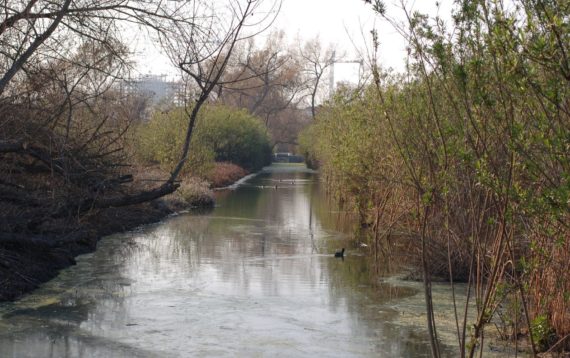Location: Orange County
Project Type: Restoration Planning
Status: Current
Habitat Type: Freshwater Wetland, Riparian, Rivers and Streams, salt marsh, Tidal Wetland
Cost: $350,000
Funding Gap: $350,000
Area Affected: 100 acres
Project Footprint: 0.3 stream miles
Assembly District: 74
Senate District: 37
Congressional District: 45
Project Lead/Grantee:
University of California Irvine (Megan Lulow, mlulow@uci.edu)
 For more information, visit scwrp.org
For more information, visit scwrp.org
The University of California, Irvine manages the UC Irvine San Joaquin Marsh Reserve, an approximately 200 acre wetland that is a remnant of a more extensive fresh to brackish water marsh ecosystem in coastal Orange County. Agricultural and urban development in Irvine during the 20th century drained shallow water aquifers, severed hydrological connections, concentrated water drainages to form San Diego Creek, and then realigned the creek in a flood control channel. These activities altered the source, quantity, and quality of water available to the Marsh Reserve. Despite these impacts, the UCI Marsh Reserve has been a vital resource for hundreds of species of birds and supports sensitive species such as the southwestern pond turtle and Ridgway Rail.
Due to depleted groundwater levels and severed creek connections, Marsh Reserve staff and resources have been used to pump water from San Diego Creek channel to supply this critical resource to the Marsh Reserve. During the past decade, however, water levels in the channel have been lower, due to a combination of drought and water conservation efforts to reduce selenium and sediment pollutants from reaching Newport Back bay. As a result, staff have not been able to maintain adequate water levels in drought years using current infrastructure, and an agreement with neighbors sharing a water diversion had to be established. Climate change has also affected the frequency, intensity, and duration of storm events, subjecting the Marsh Reserve to greater risk of severe flooding, in addition to limiting the days available to pump sufficient water.
The need remains to address the problems of altered creek flows and now dysfunctional connections with San Diego Creek due to climate change. The UCI Marsh Reserve is therefore seeking funds to support feasibility studies and design plans that will model and identify sustainable solutions to acquiring critical water resources from San Diego Creek and provide guidance for planning for sea level rise. Historically, the lower part of the UCI Marsh likely received brackish tidal flows. Studies and design plans could identify how to appropriately transition and restore this area to support saltwater marsh, further diversifying the wetland habitats of the reserve.
Goals for feasibility studies and design plans are to: 1) model and identify freshwater sources for the UCI San Joaquin Marsh including both dry weather and storm water flows; 2) determine thresholds for storm water quantity and quality conducive to sustaining healthy riparian and freshwater emergent wetland in wet and dry years; 3) determine what bathymetry of the Lower Marsh would support healthy saltwater marsh habitat given projections of sea level rise; and 4) design intake structures and bioswales capable of utilizing stormwater during low risk flows and buffering against high risk flows. Marsh Reserve staff have been working with University faculty and administrators, OC Public Works, OC Parks, and advisory committees of the Wetland Recovery Group to gain advice and support for these goals.

